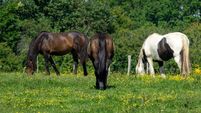CAP reform means less money for farmers
He said no one could doubt that Taoiseach Enda Kenny and his Irish negotiation team put in an enormous effort — but it is now a question of allocating a diminished budget in the fairest and most productive way.
nWhat is the cut in the budget for the Single Farm Payment, corrected for inflation, according to ICMSA figures? >>The budget for the SFP has been cut from €1.255bn in 2012 to €1.213bn. This reduction of €42m per annum is likely to be applied in 2013. It is not clear yet if this will be a linear deduction or a deduction in some other format from the 2013 payment. This is the reduction in nominal terms, and will be substantially higher in real terms, when inflation is taken into account. For a farmer with an SFP of €10,000, it will mean an annual cut of €340. This cut must also be taken in the context that farmers face additional cuts due to a National Reserve and a Young Farmers Scheme, leading to a total cut of possibly 5%. Given that farmer payments have been reduced by 13% already since the introduction of decoupling in 2005, due to modulation and the National Reserve, farmers payments will be cut by 21.3% in 2014 compared to their 2005 levels — and this does not take account of the convergence proposals which could have a very serious impact on individual farmers. These are massive cuts for farmers, particularly in the context that the EU is pushing for more market deregulation, leading to greater price volatility, and that these payments are declining in real terms.










